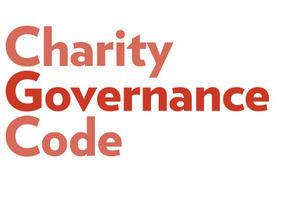Just as certain as it is that mince pies and mulled wine become staples of our diets in December, so news outlets run articles looking back at the big issues of the year.
The highs, the lows, and the in between; they provide an opportunity to reflect on what has happened, relive the best bits, and look to the future. This year I wasn’t going to bother. 2020 has been dominated by just the one huge story, which is far from over yet, and isn’t something anyone would want to relive in a hurry.
However, there is not one universal charity experience of the pandemic. Some charities saw their funding sources collapse, others saw demand sky rocket, and some had no choice but to mothball. Almost all had to rethink what and how they operated.
In truth it is many stories, all knitted together, which highlight the breadth of issues charities are involved in and the variety of ways they set out to achieve their missions.
Funder power and relationships
Power dynamics in the sector have been brought into sharper focus by the scale and urgency of the crisis.
Trusts and foundations, those with the money and power, are stereotypically slow and inflexible but this year has shown that does not always have to be the case.
In mid-March, London Funders co-ordinated a joint statement promising charities that they would be understanding and supportive. It was eventually backed by 400 others funders.
Last month they reiterated this commitment, offering ongoing support through 2021.
Black Lives Matter
There is undoubtedly much more work to be done, and promises that need to be kept. But 2020 has shown that anti-racism work is an essential element of the modern charity sector.
Black Lives Matter protests, sparked by the death of George Floyd, along with the stark reality that communities of colour were the hardest hit by the pandemic, forced many to confront uncomfortable truths about racial equity in Britain, including within charities.
#CharitySoWhite launched a live position paper in April demanding that funders and charities take a new approach to put “marginalised communities at the heart of our responses”.
There was frustration when it emerged that charities led by people of colour were more at risk of closure and were finding it harder to access available funding. The National Emergencies Trust was explicitly criticised for failing to prioritise equitable distribution in the early days of the pandemic.
Since then, a number of funders have changed their approach. For example, in August Comic Relief and the National Emergencies Trust (NET) ring-fenced a total of £5.2m in funding for BAME-led charities and groups, distributed through two separate funds.
Elsewhere there are encouraging developments in generating new sources of funding, such as the launch of a crowdfunding network for Black-led charities.
Aside from the funding element some charities have made progress in identifying their own institutional racism and setting out how they will tackle it. Just last week Save the Children set out its plan to become more inclusive and the Westway Trust admitted to its own failings.
Worryingly, the National Trust and Barnardo's have been criticised by Conservative MPs, who have complained to the Charity Commission, for some of the work they have done in this area. The Trust for a report highlighting links to slavery at some properties and Barnardo's for a blog outlining how to talk about white privilege with children. It remains to be seen whether any further regulatory action will be taken, but there is a risk that given the high-profile criticism others will be discouraged from similar initiatives.
Hope and community
There were many times when it was easy for people working in the charity and voluntary sector to feel despondent. There were, and still are, serious concerns about the long-term sustainability of many voluntary organisations whose resources have been stretched to limit.
However, it was the charities and volunteering that often provided the general public with hope and inspiration.
Of course, this article had to mention Captain Tom, and his incredible and enduring fundraising effort. After raising £33m for NHS Charities Together he went on to set up his own charity.
It hasn’t all been about Captain Tom though. Across the sector charities have proved vital in helping people to stay connected and feel part of something. Whether it be through virtual fundraising events and challenges, telethon fundraisers, or by hosting Covid-compliant and socially distanced events when allowed.
By innovating their fundraising or service delivery some charities have found that they have been able to reach new audiences, who maybe would not have been aware of the charity previously.
Indeed, at Charity Finance Week this autumn, Lara Burns, chief digital officer at the Scouts, said even when face-to-face could start-up over the summer, many of its leaders took a “blended” approach and continued to use new digital tools such as Zoom.
Onward to 2021
With the ongoing impact of the pandemic looking likely to collide with the potential consequences of trading with the European Union under WTO rules from January, it would be easy to be pessimistic.
While there is no question that next year will be difficult, possibly more difficult than this year has been, 2020 has shown how adaptable and resilient the sector is when it matters.
So, with that in mind remembering and celebrating the sector's achievements this year is vital to understanding how best to face up to the challenges ahead.
Related articles











